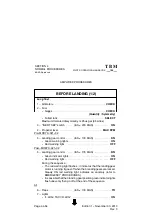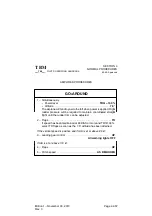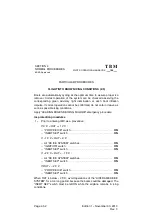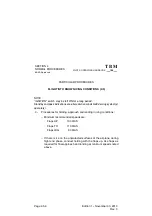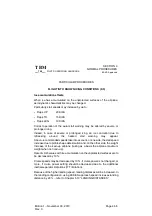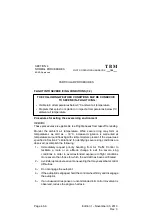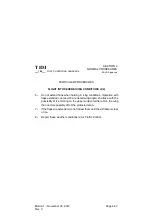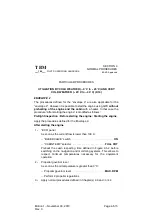
TBM
PILOT’S OPERATING HANDBOOK
700
SECTION 4
NORMAL PROCEDURES
EASA Approved
Page 4.5.6
Edition 1 -- November 30, 2010
Rev. 0
PARTICULAR PROCEDURES
FLIGHT INTO SEVERE ICING CONDITIONS (1/2)
THE FOLLOWING WEATHER CONDITIONS MAY BE CONDUCIVE
TO SEVERE IN--FLIGHT ICING :
-- Visible rain at temperatures below 0
°
C ambient air temperature,
-- Droplets that splash or splatter on impact at temperatures below 0
°
C
ambient air temperature.
Procedures for exiting the severe icing environment
REMARK :
These procedures are applicable to all flight phases from takeoff to landing.
Monitor the ambient air temperature. While severe icing may form at
temperatures as cold as -- 18
°
C, increased vigilance is warranted at
temperatures around freezing with visible moisture present. If the visual cues
specified in Section 2 ”Limitations” for identifying severe icing conditions are
observed, accomplish the following :
1 -- Immediately request priority handling from Air Traffic Control to
facilitate a route or an altitude change to exit the severe icing
conditions in order to avoid extended exposure to flight conditions
more severe than those for which the aircraft has been certificated.
2 -- Avoid abrupt and excessive maneuvering that may exacerbate control
difficulties.
3 -- Do not engage the autopilot.
4 -- If the autopilot is engaged, hold the control wheel firmly and disengage
the autopilot.
5 -- If an unusual roll response or uncommanded roll control movement is
observed, reduce the angle--of--attack.


